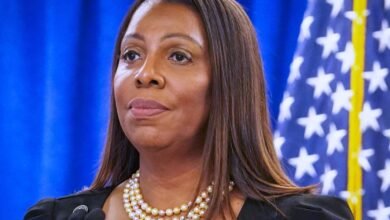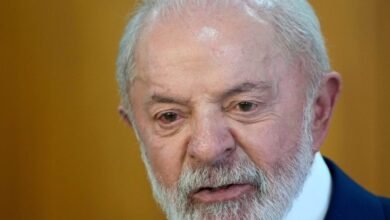
Federal Reserve of Minneapolis president Neel Kashkari believes there should be, and will be, further interest rate cuts in 2024.
In an essay explaining his support for last week’s 50-basis point cut, Kashkari said he supported further such moves by the Federal Reserve. Although, as is typical of Fed officials, he avoided providing definitive predictions.
“Even after the 50 basis-point cut, I believe the overall stance of monetary policy remains tight,” Kashkari wrote.
Kashkari expects future cuts to be smaller than the one from earlier this month. “I was comfortable taking a larger first step, and then as we go forward, I expect, on balance, we will probably take smaller steps unless the data changes materially,” he told CNBC Monday morning.
Kashkari appears to be telegraphing to investors that the Fed is planning to cut rates by 25 basis points, unless the job market worsens, according to Jeffrey Roach chief economist at LPL Financial. “FOMC members are likely prepping investors for a steady pace of cuts for the next several meetings,” he said in an email to Fortune.
The Federal Reserve Open Markets Committee, which sets U.S. interest rates, has two more meetings this year, one in November and another in December. Bloomberg reported Kashkari favors another 50 basis points worth of rate cuts by the end of the year. Kashkari is not a voting member of the FOMC.
The rate cut announced on Sept. 18 had been highly anticipated, though the decision to cut by half a percentage point rather than the usual quarter point was somewhat of a surprise. At the time, Federal Reserve chair Jerome Powell justified the size of the cut because of the notable declines in the rate of inflation paired with the slight uptick in the unemployment rate.
Inflation has been at or below 3% for three consecutive months since June. That trend was a promising sign after inflation had floated between 3% to 4% for almost a year, which sparked fears about whether it would ever come down to the Fed’s target rate of 2%. Now that hitting the target rate appears much more likely, the central bank finds itself dealing with a softening labor market.
“The balance of risks has shifted away from higher inflation and toward the risk of a further weakening of the labor market, warranting a lower federal funds rate,” Kashkari wrote in Monday’s essay.
The unemployment rate in August was 4.2%, marking the fourth consecutive month it was above 4%.
In looking forward to the near future, Kashkari told CNBC he believes that a surprising increase in the unemployment rate is more likely than an unexpected increase in inflation. However, the exact nature of the rise of unemployment doesn’t neatly point to the sort of mass layoffs that presage a recession. There has been an increase in the labor supply as a result of increased immigration. That has meant more people are looking for jobs, rather than that many people have lost their jobs. Ordinarily the current unemployment data would have triggered the Sahm Rule. However, given the uptick in labor supply, the rule didn’t apply, warranting closer scrutiny about the specifics of the labor market.
All that makes for an economic picture that continued to be promising but still offered plenty of “mixed signals,” about the underlying strength of the economy, according to Kashkari. He specifically pointed to robust GDP growth and consumer spending as signs that a major slowdown did not appear imminent.
How exactly those factors play out will affect the specifics of future interest rate cuts, but not whether they’re warranted, according to Kashkari.
“While there remain mixed signals about the underlying strength of the U.S. economy and I remain uncertain just how tight policy is, I do believe policy remains tight today,” he wrote.
Source link




